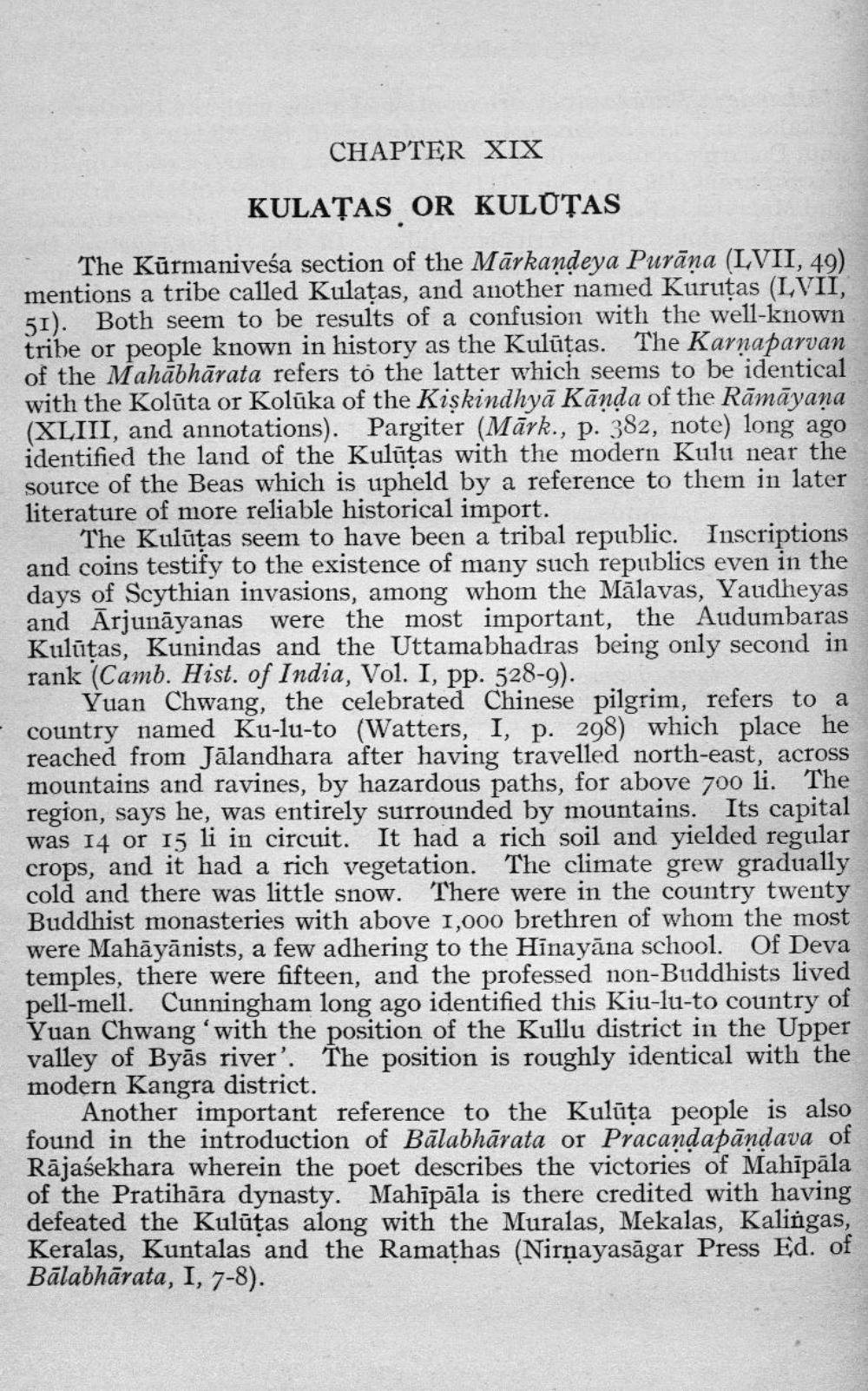________________
CHAPTER XIX
KULATAS OR KULUTAS
The Kurmaniveśa section of the Markandeya Purana (LVII, 49) mentions a tribe called Kulatas, and another named Kurutas (LVII, 51). Both seem to be results of a confusion with the well-known tribe or people known in history as the Kulüṭas. The Karnaparvan of the Mahabharata refers to the latter which seems to be identical with the Kolūta or Kolūka of the Kişkindhya Kanda of the Rāmāyaṇa (XLIII, and annotations). Pargiter (Mark., p. 382, note) long ago identified the land of the Kulutas with the modern Kulu near the source of the Beas which is upheld by a reference to them in later literature of more reliable historical import.
The Kuluṭas seem to have been a tribal republic. Inscriptions and coins testify to the existence of many such republics even in the days of Scythian invasions, among whom the Malavas, Yaudheyas and Arjunayanas were the most important, the Audumbaras Kulūtas, Kunindas and the Uttamabhadras being only second in rank (Camb. Hist. of India, Vol. I, pp. 528-9).
Yuan Chwang, the celebrated Chinese pilgrim, refers to a country named Ku-lu-to (Watters, I, p. 298) which place he reached from Jalandhara after having travelled north-east, across mountains and ravines, by hazardous paths, for above 700 li. The region, says he, was entirely surrounded by mountains. Its capital was 14 or 15 li in circuit. It had a rich soil and yielded regular crops, and it had a rich vegetation. The climate grew gradually cold and there was little snow. There were in the country twenty Buddhist monasteries with above 1,000 brethren of whom the most were Mahāyānists, a few adhering to the Hinayana school. Of Deva temples, there were fifteen, and the professed non-Buddhists lived pell-mell. Cunningham long ago identified this Kiu-lu-to country of Yuan Chwang'with the position of the Kullu district in the Upper valley of Byas river'. The position is roughly identical with the modern Kangra district.
Another important reference to the Kuluța people is also found in the introduction of Balabharata or Pracandapandava of Rajasekhara wherein the poet describes the victories of Mahipala of the Pratihara dynasty. Mahipala is there credited with having defeated the Kuluṭas along with the Muralas, Mekalas, Kalingas, Keralas, Kuntalas and the Ramathas (Nirnayasagar Press Ed. of Balabharata, I, 7-8).




